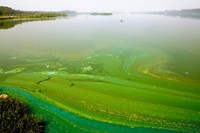Advertisement
Grab your lab coat. Let's get started
Welcome!
Welcome!
Create an account below to get 6 C&EN articles per month, receive newsletters and more - all free.
It seems this is your first time logging in online. Please enter the following information to continue.
As an ACS member you automatically get access to this site. All we need is few more details to create your reading experience.
Not you? Sign in with a different account.
Not you? Sign in with a different account.
ERROR 1
ERROR 1
ERROR 2
ERROR 2
ERROR 2
ERROR 2
ERROR 2
Password and Confirm password must match.
If you have an ACS member number, please enter it here so we can link this account to your membership. (optional)
ERROR 2
ACS values your privacy. By submitting your information, you are gaining access to C&EN and subscribing to our weekly newsletter. We use the information you provide to make your reading experience better, and we will never sell your data to third party members.
Environment
Shrinking Of Gulf ‘Dead Zone’ Postponed
by Jessica Morrison
February 23, 2015
| A version of this story appeared in
Volume 93, Issue 8
Shrinking the Gulf of Mexico’s “dead zone” will take two decades longer than expected, say EPA and its Hypoxia Task Force. Composed of representatives from the 12 states of the Mississippi River Basin, the task force had set a goal to shrink the low-oxygen dead zone that forms each summer from about 6,000 sq miles to 2,000 sq miles by 2015. But now, the task force has extended that deadline to 2035. Although progress has been made in some watersheds, nitrogen and phosphorus entering the Gulf of Mexico need to be decreased by 45%, EPA says. High levels of nitrogen and phosphorus from sewage treatment plants, industries, agriculture, and stormwater runoff cause algal blooms in the Gulf’s water. When these algae die and decompose, dissolved oxygen levels fall, harming aquatic life. Under the new plan, states would reduce nutrient loads by 20% by 2025.




Join the conversation
Contact the reporter
Submit a Letter to the Editor for publication
Engage with us on Twitter